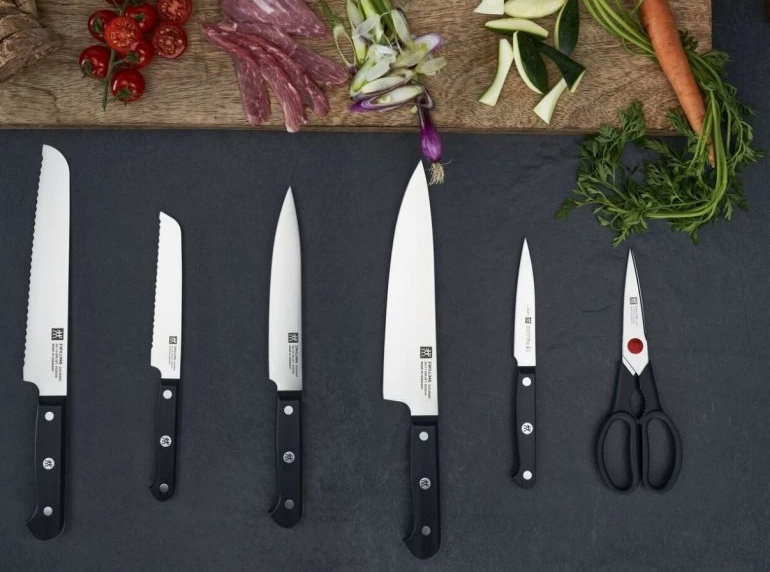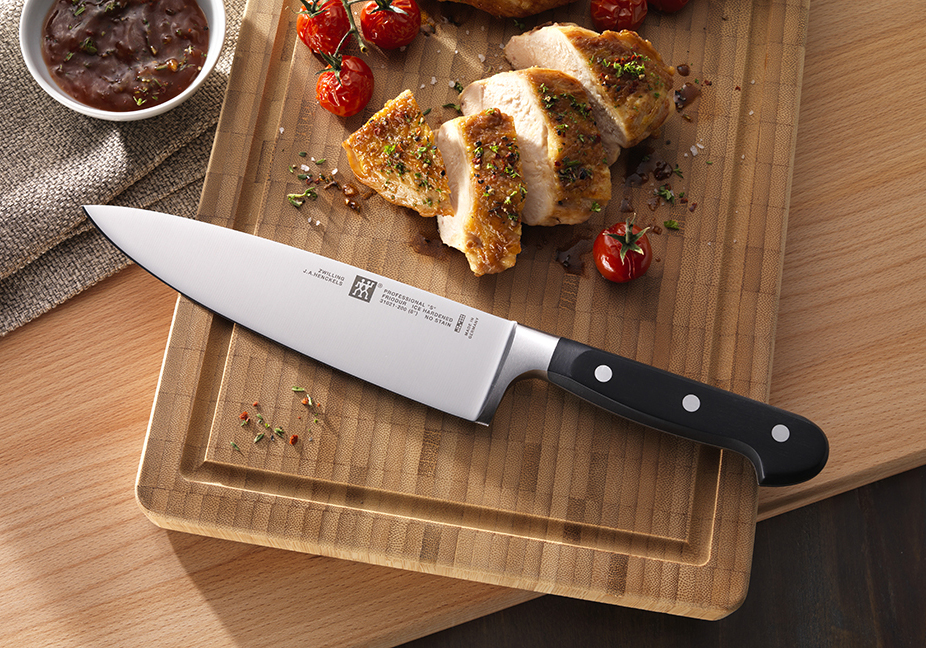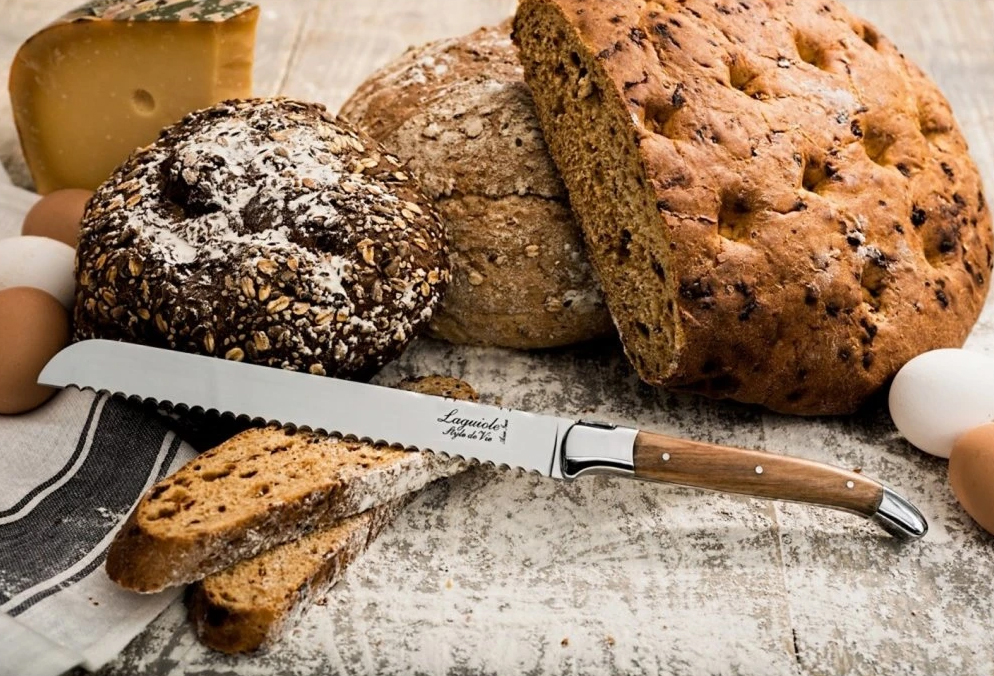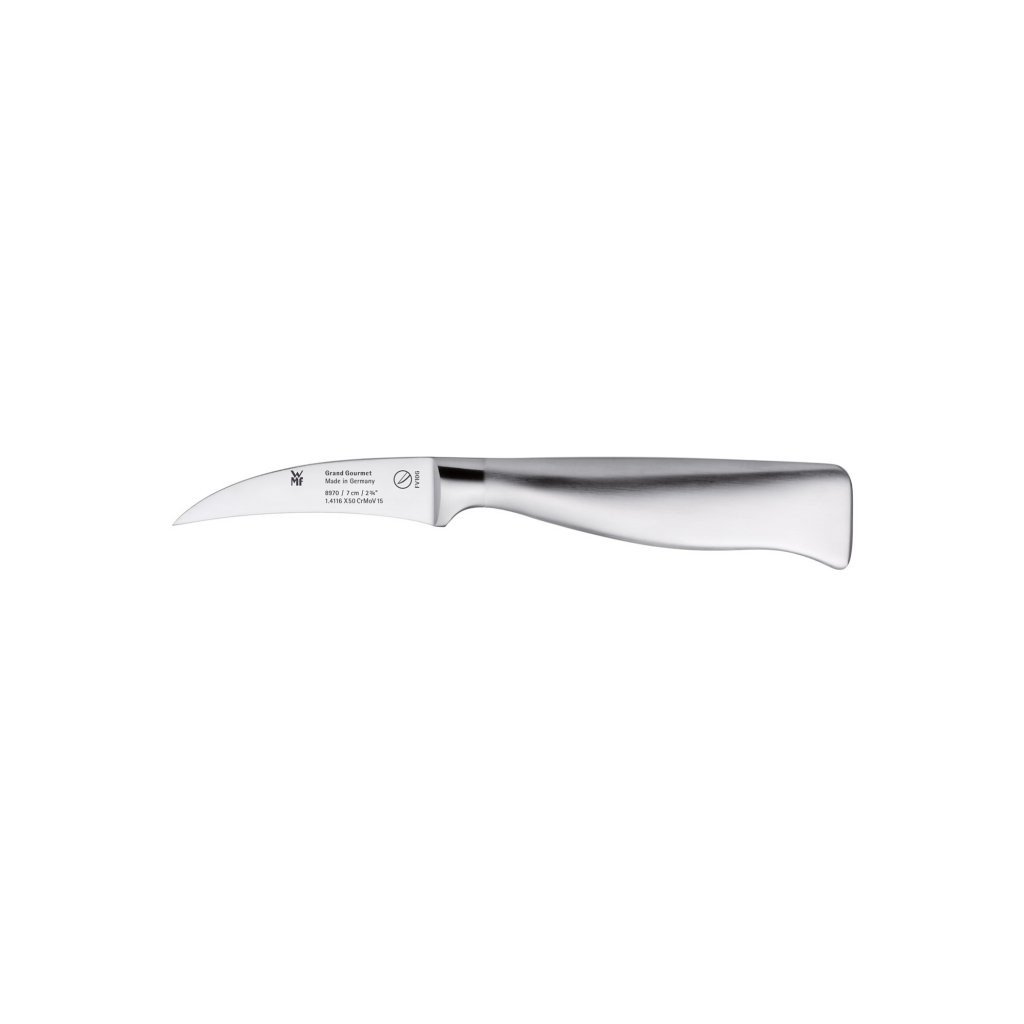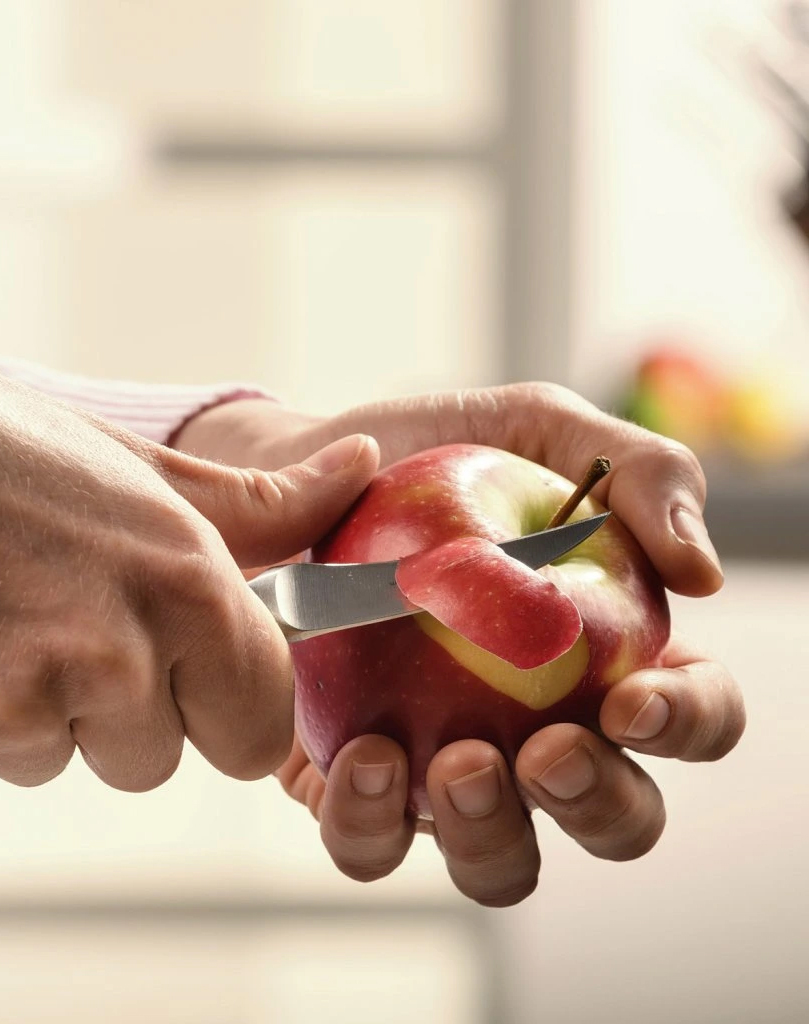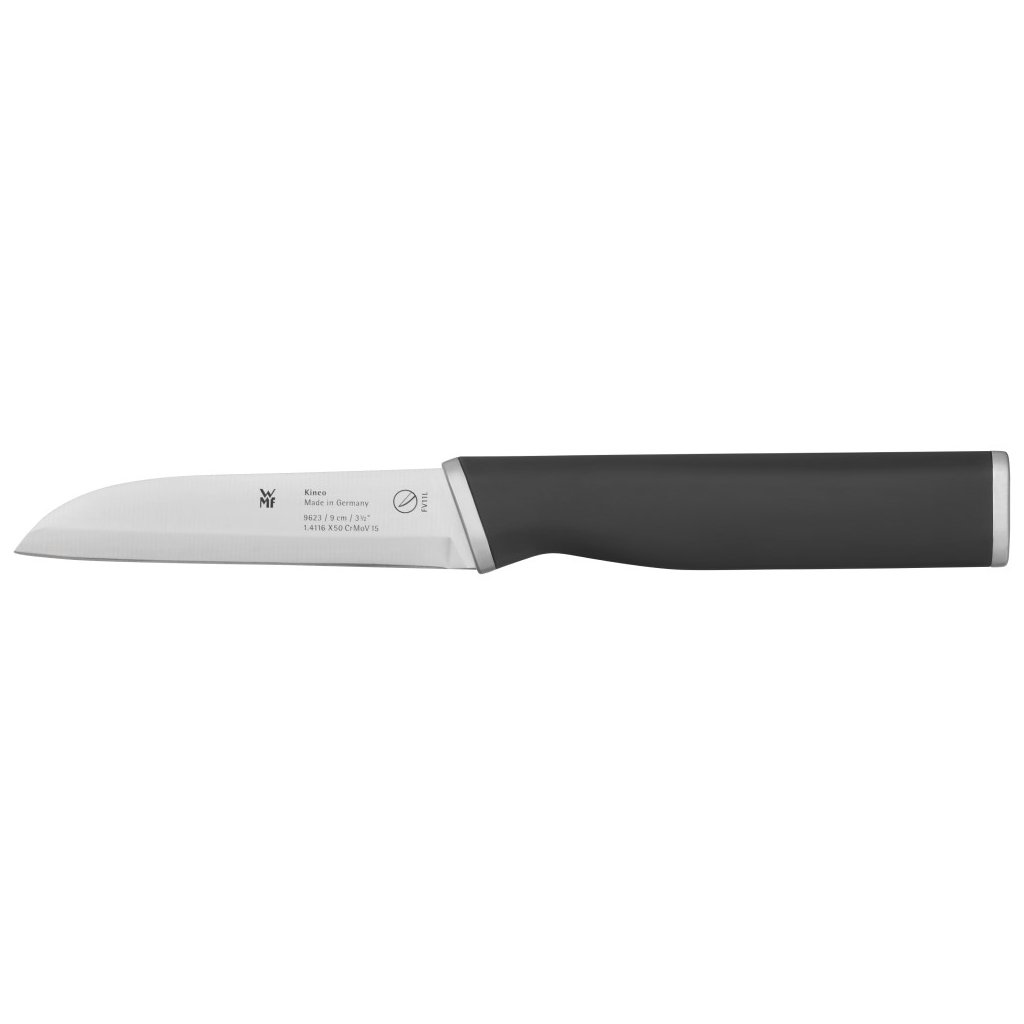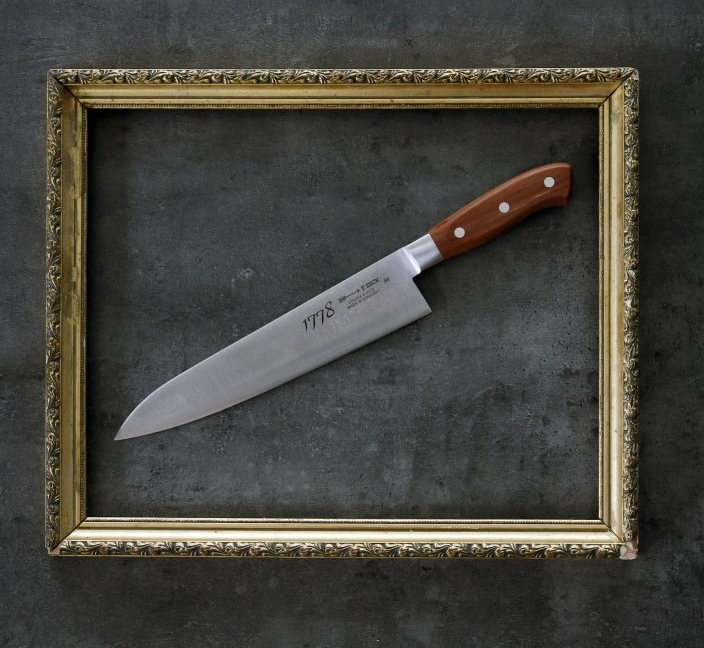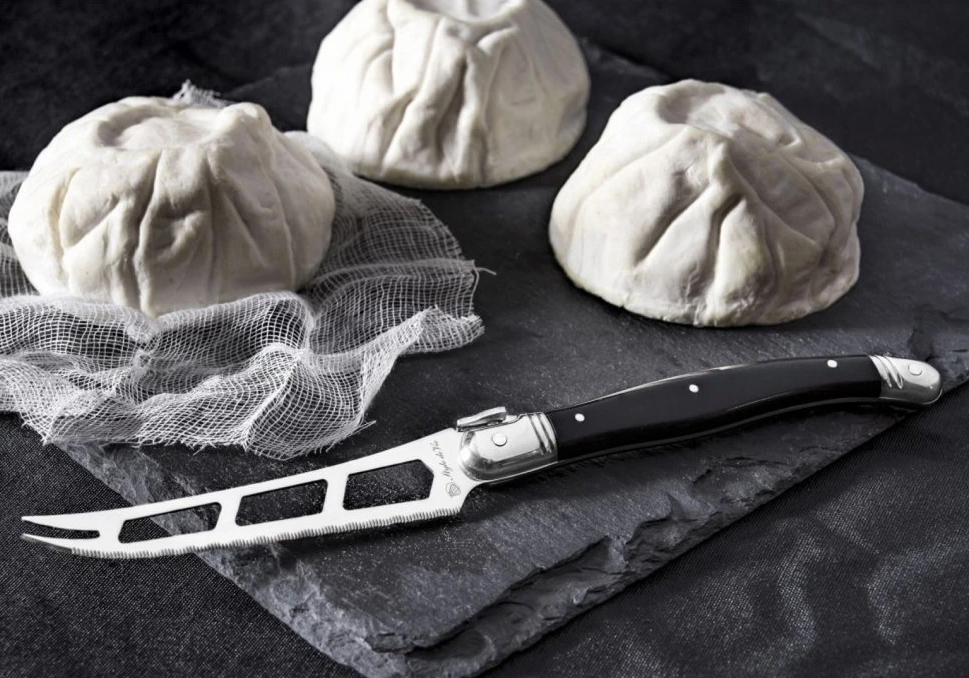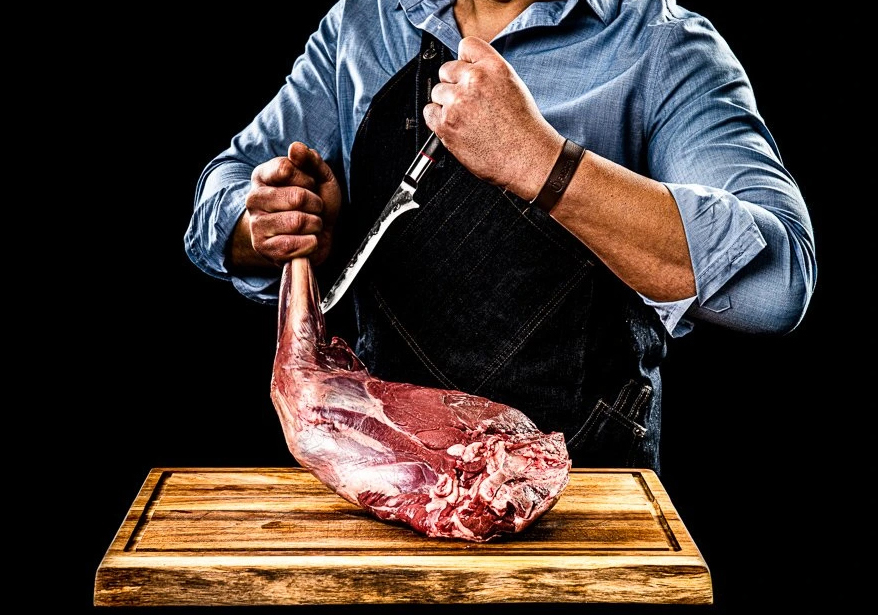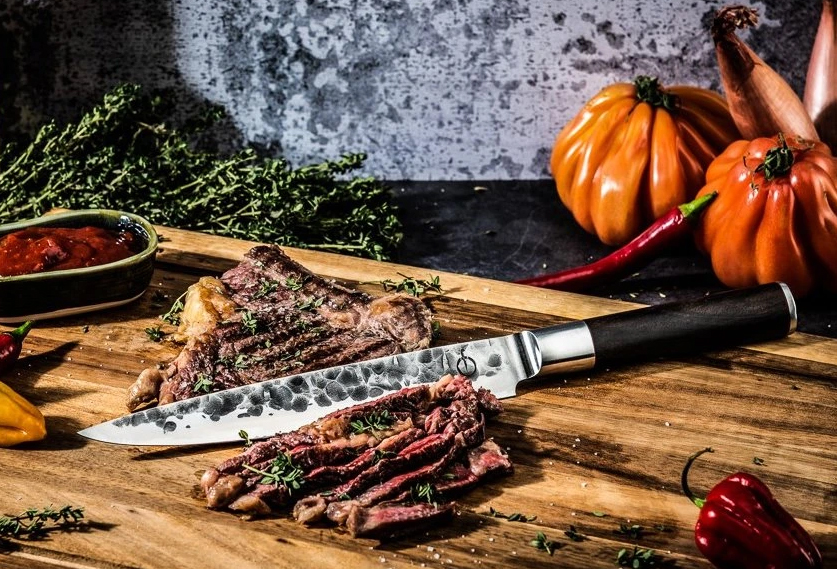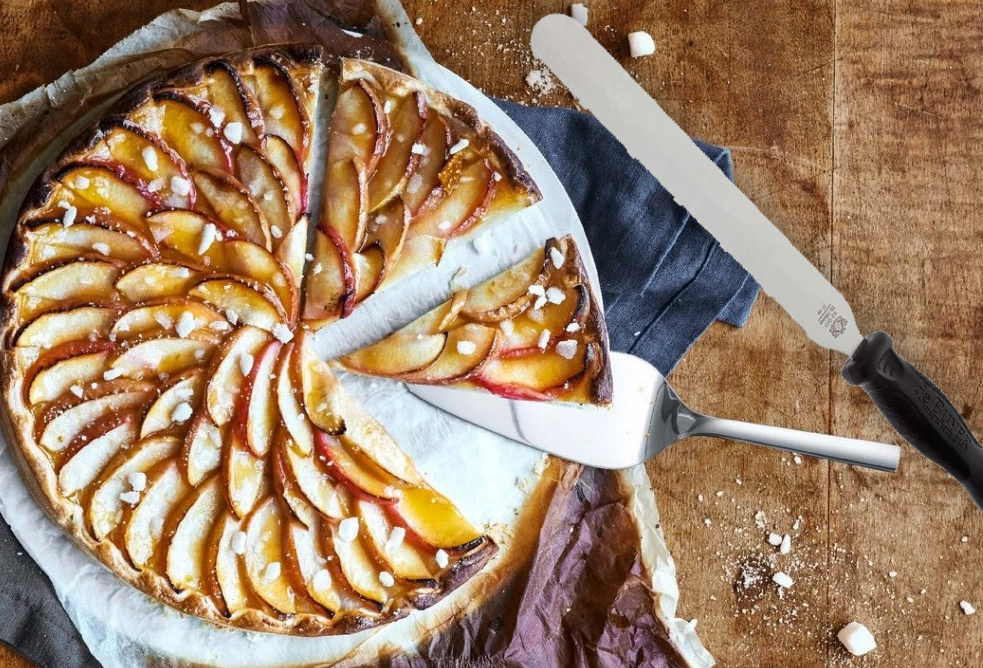Did you know that the correct length of the knife, or more precisely the blade, is absolutely crucial for efficiency and comfort when preparing food? Because every knife is suited to something different. We'll give you tips on how to find your way around the different knife lengths and how to choose the right one.

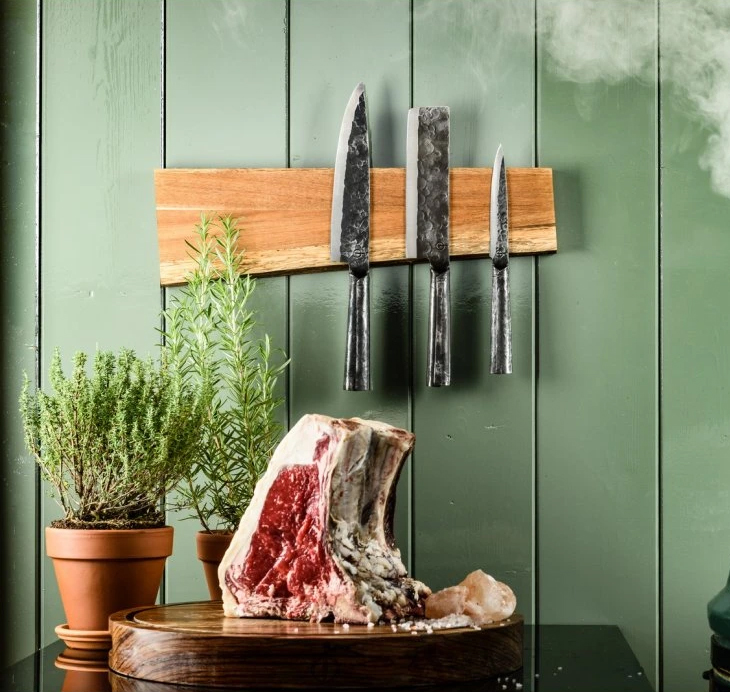
- How does it fit in your hand?
We're talking about chef's knifebecause choosing the right length is crucial in his case. We have a simple guide for you: the ideal knife for you should have a blade roughly as long as the distance from your elbow to your wrist (if you order online, use a tape measure). Remember that the length given for knives is always the length of the blade, not the entire knife. So it's quite possible that you may need two chef's knives in your home - one for her and one for him. We know a lot more about chef's knives, read it. - What are you gonna cut?
If you don't know, then reach for a medium-sized universal knife. It will be a versatile helper. Otherwise, however, a medium chef's knife, a short vegetable knife and a long bread knife should form the basic equipment of every kitchen. - Where do you cut?
It's simple maths - you need a proper knife for a longer knifecutting board a space, while with the smaller and medium knife you can work anywhere. - Are you a lover of sushi, fish, cheese?
Then you can't do without several specialised knives of different lengths. - What kind of care do you give him?
Different knife lengths may require different maintenance and grinding. For example, long bread knives with serrated blades are more difficult to sharpen than short vegetable knives. Choose a knife length that you will be able to keep sharp and clean easily. Read about proper knife maintenance more.
Short knives
The short knives, with blades up to 10 cm, are designed for precise and detailed work. Thanks to their small size and lightness, they provide excellent control when cutting, trimming, peeling or decorating. Typical examples of short knives:
Peeling knives
They are ideal for peeling or cutting small fruits and vegetables. The short and sharp blade offers precision and easy handling.
Edging knives
They have a thin, sharp blade, sometimes with unique shapes or a serrated edge that allows for precise cuts. They are also suitable for decorating.
The best edging and peeling knives

Medium-long knives
Medium-length knives, with blade lengths between 10 and 20 cm, can take several forms, each finding its unique application in the kitchen. Typical examples of medium knives:
Cooking or santoku
These are versatile tools suitable for a wide variety of kitchen tasks such as cutting meat, vegetables, fruit, etc. They offer a balanced combination of control and power. They are versatile enough to be appreciated by beginners and professionals alike and should therefore not be missed in any kitchen. Read on, how to choose a chef's knife.
Knives for cheese
Cheese knives have a specific blade, which is often perforated to prevent cheese residue from sticking to it and to ensure smooth cutting. Knives with serrated blades are ideal for harder cheeses such as cheddar, while straight blades are better for soft cheeses where precision is important.
Boning knives
They are designed for removing bones from meat and fish. These tasks require precision and control, so they have a narrow, flexible and sharp blade that allows easy manoeuvring around bones and tendons. Read more, how to choose the right meat knife.
The most popular medium-long knives according to customer reviews
Long knives
Long knives, with blades longer than 20 cm, offer a wide cutting surface, so they are suitable for cutting large pieces of food. Typical examples of long knives:
Pastry knives
They are an essential tool that should not be missing in any kitchen. They have a long, sturdy blade with distinctive serrations that can cut through tough crusts of bread or other baked goods without crushing or otherwise disturbing the texture.
Filleting knives
They are specialized tools for precise cutting of fish and other meats. They have a long, thin and flexible blade that allows them to glide smoothly along bones and skin.
Confectionery knives
These knives are designed for easy cutting and serving of cakes or desserts. They have a long, thin and often serrated blade that allows for clean and even cuts without damaging the texture of the cake.
Best selling long knives
- Precision, control, suitable for detailed work.
- Limited use for processing larger raw materials.
- Versatile, comfortable to use for most tasks.
- Not ideal for extremely detailed work.
- Efficiency when cutting large volumes of food.
- More difficult to handle for delicate work.
